2024
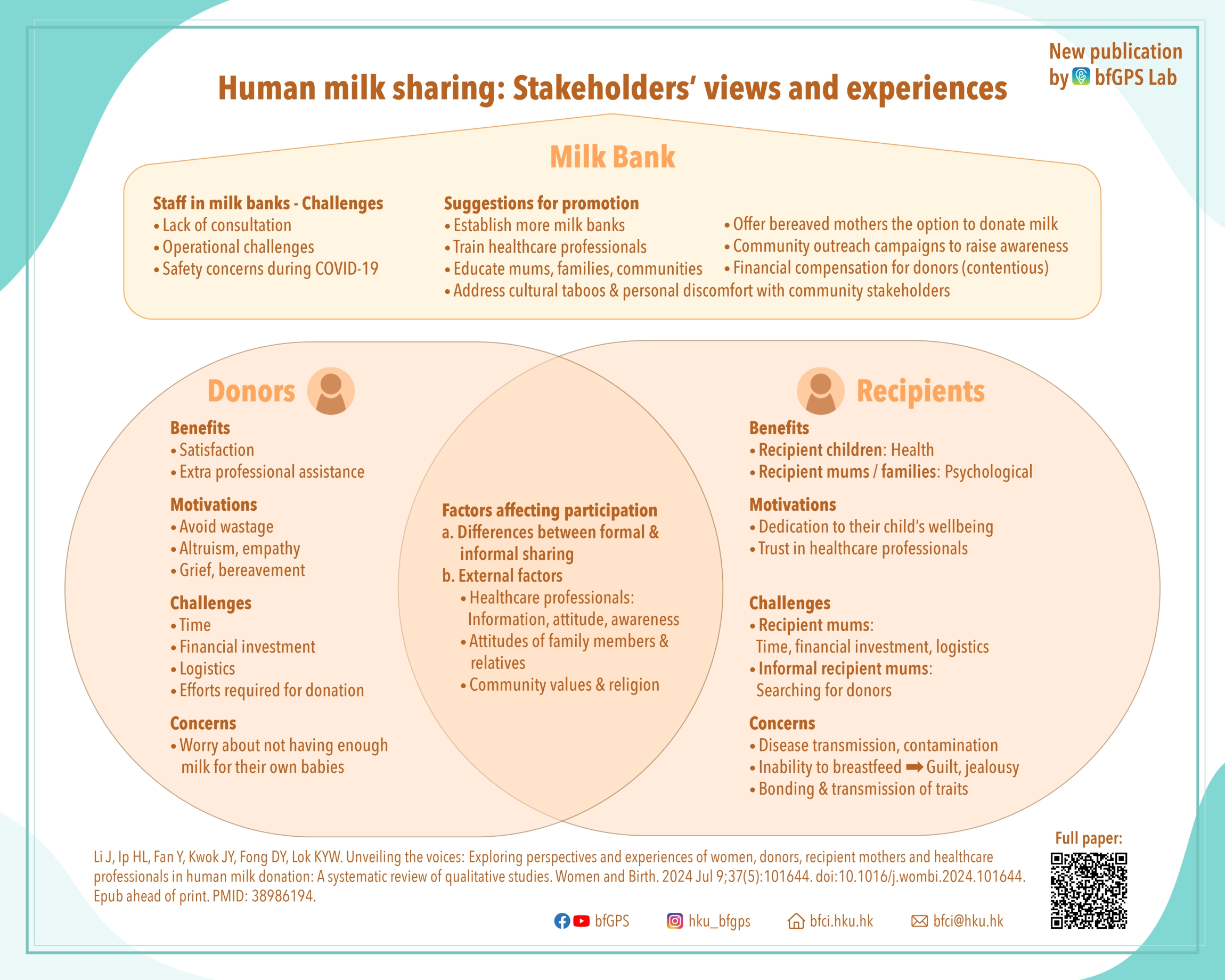
Li J, Ip HL, Fan Y, Kwok JY, Fong DY, Lok KYW. Unveiling the voices: Exploring perspectives and experiences of women, donors, recipient mothers and healthcare professionals in human milk donation: A systematic review of qualitative studies. Women and Birth. 2024 Jul 9;37(5):101644. doi: 10.1016/j.wombi.2024.101644. Epub ahead of print. PMID: 38986194.
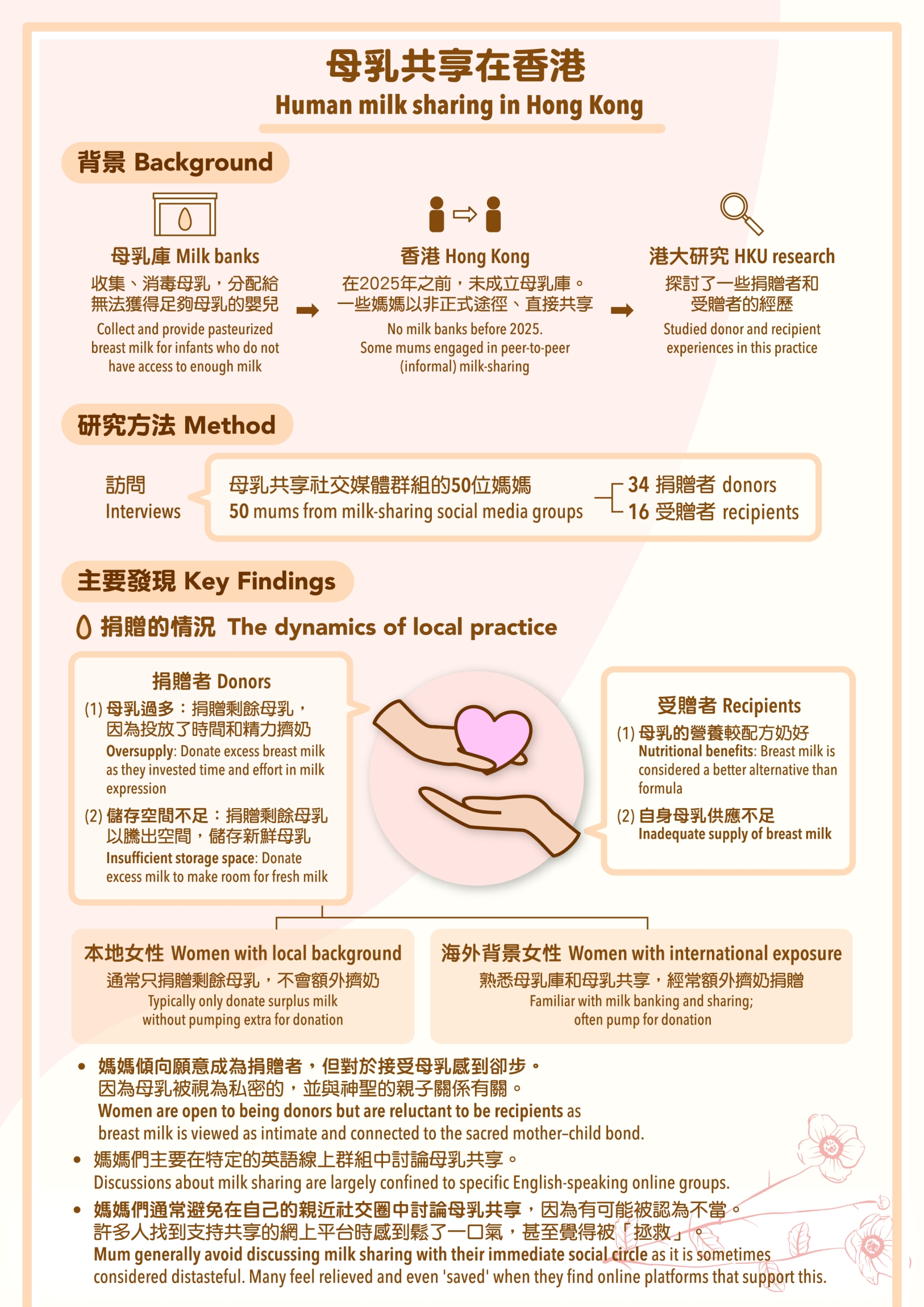
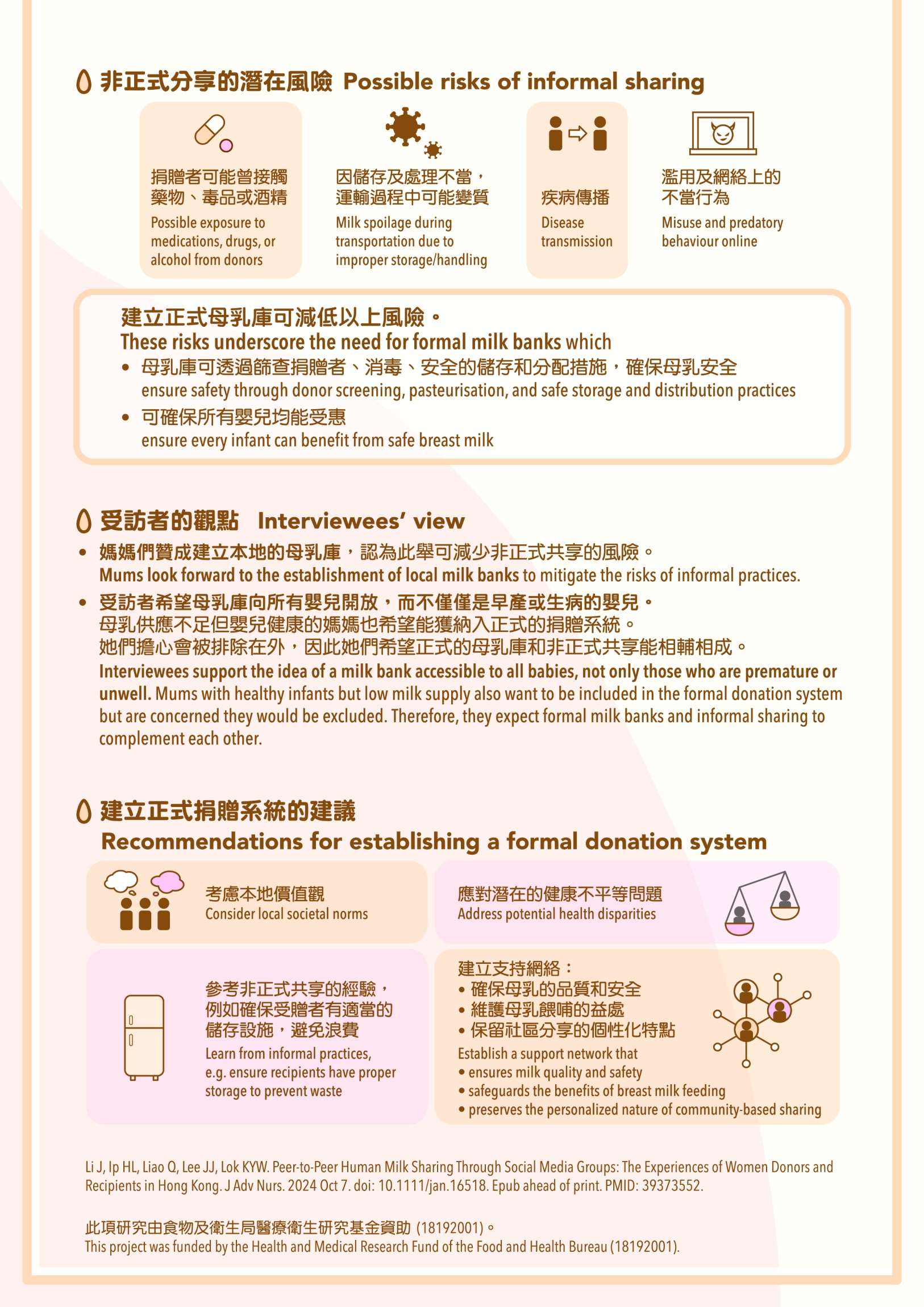
Li J, Ip HL, Liao Q, Lee JJ, Lok KYW. Peer-to-Peer Human Milk Sharing Through Social Media Groups: The Experiences of Women Donors and Recipients in Hong Kong. J Adv Nurs. 2024 Oct 7. doi: 10.1111/jan.16518. Epub ahead of print. PMID: 39373552.
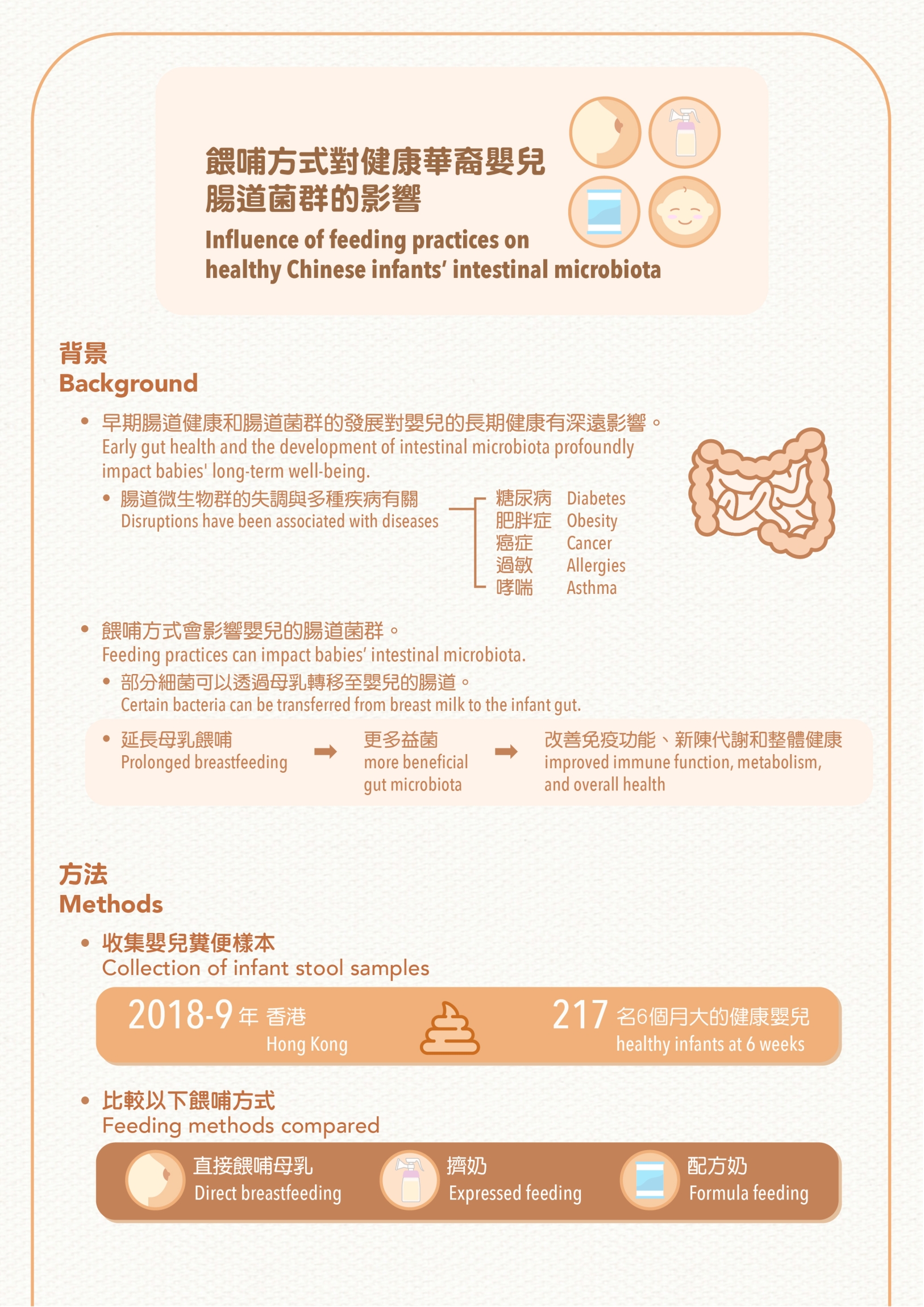
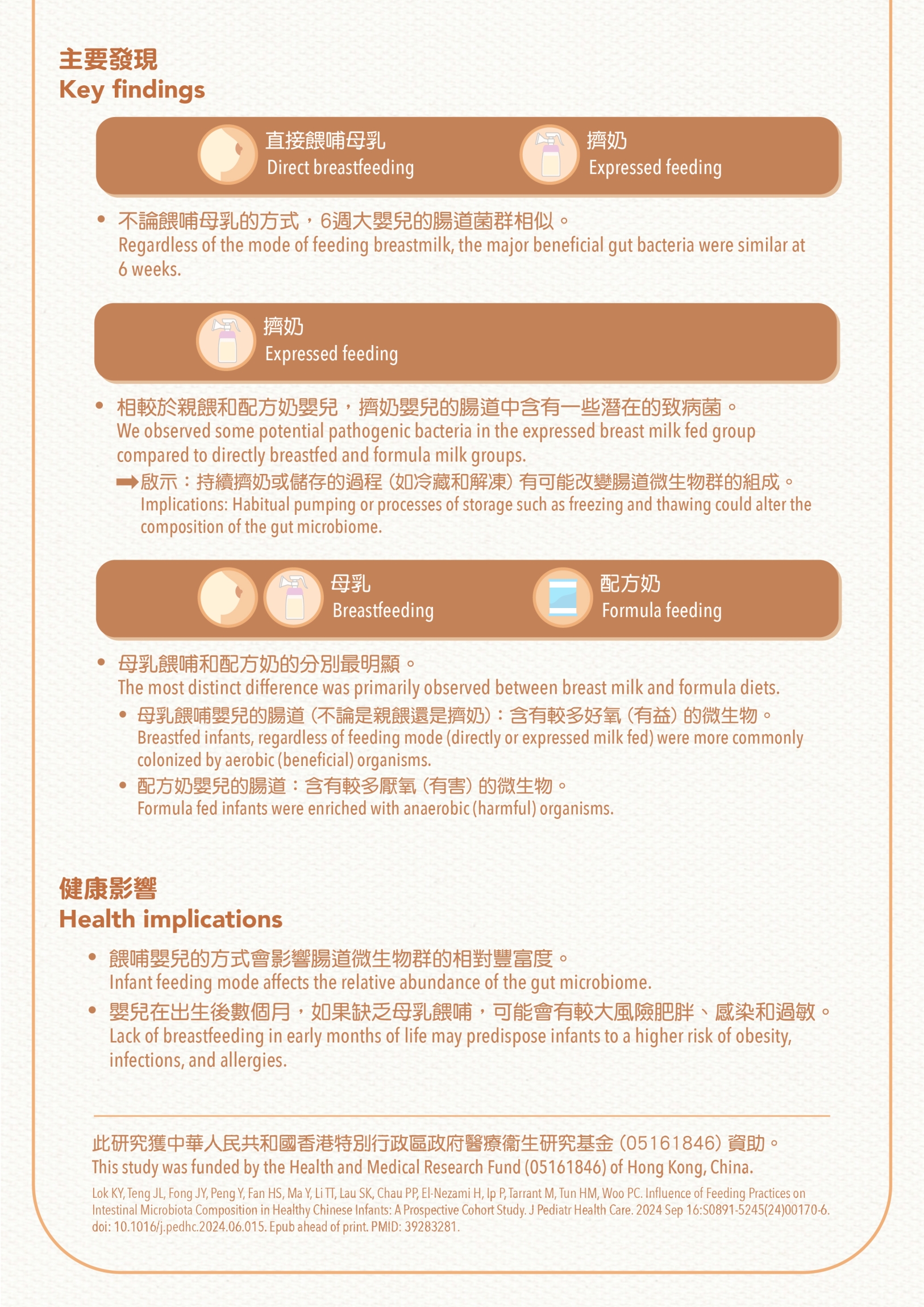
Lok KY, Teng JL, Fong JY, Peng Y, Fan HS, Ma Y, Li TT, Lau SK, Chau PP, El-Nezami H, Ip P, Tarrant M, Tun HM, Woo PC. Influence of Feeding Practices on Intestinal Microbiota Composition in Healthy Chinese Infants: A Prospective Cohort Study. J Pediatr Health Care. 2024 Sep 16:S0891-5245(24)00170-6. doi: 10.1016/j.pedhc.2024.06.015. Epub ahead of print. PMID: 39283281.
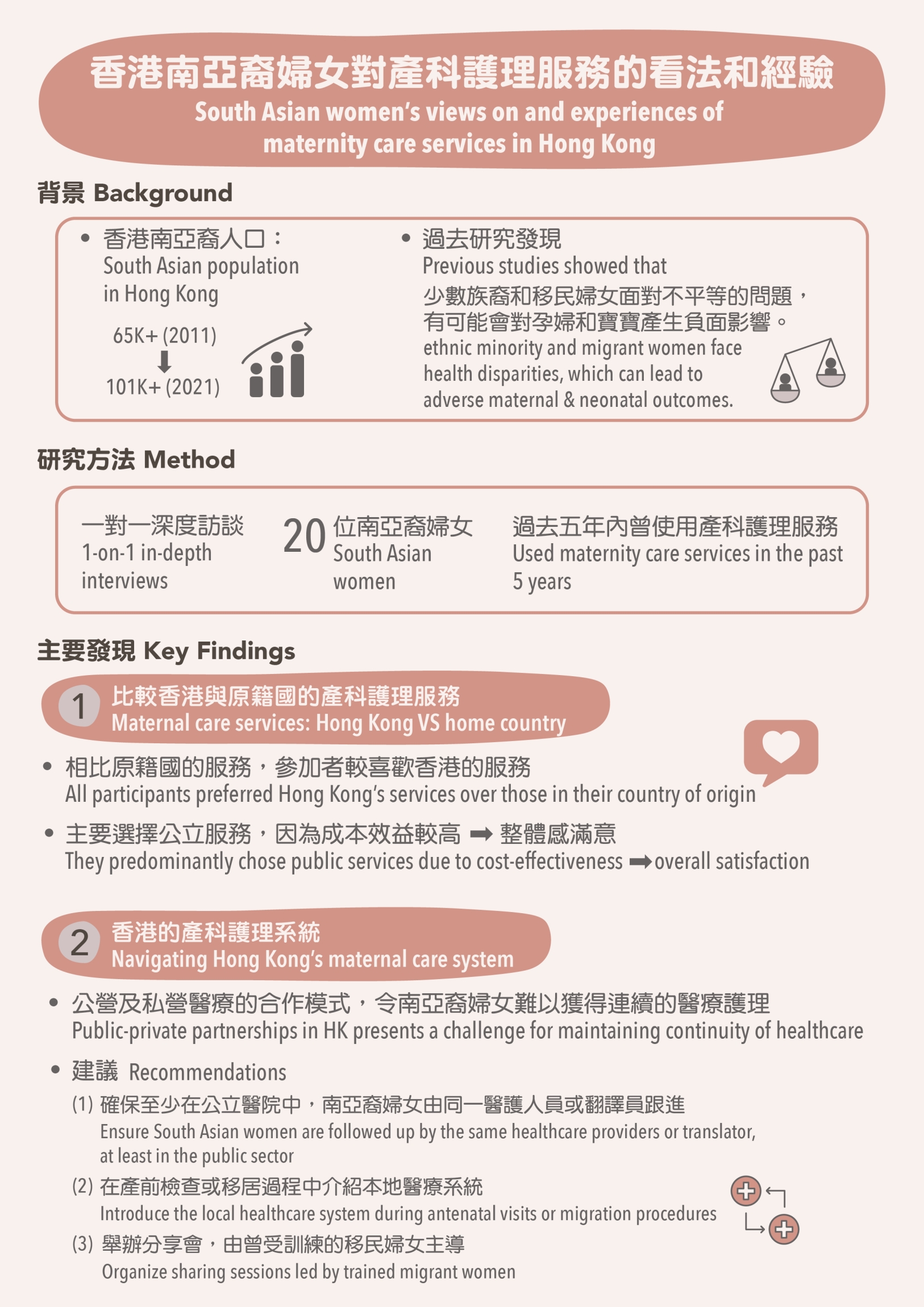
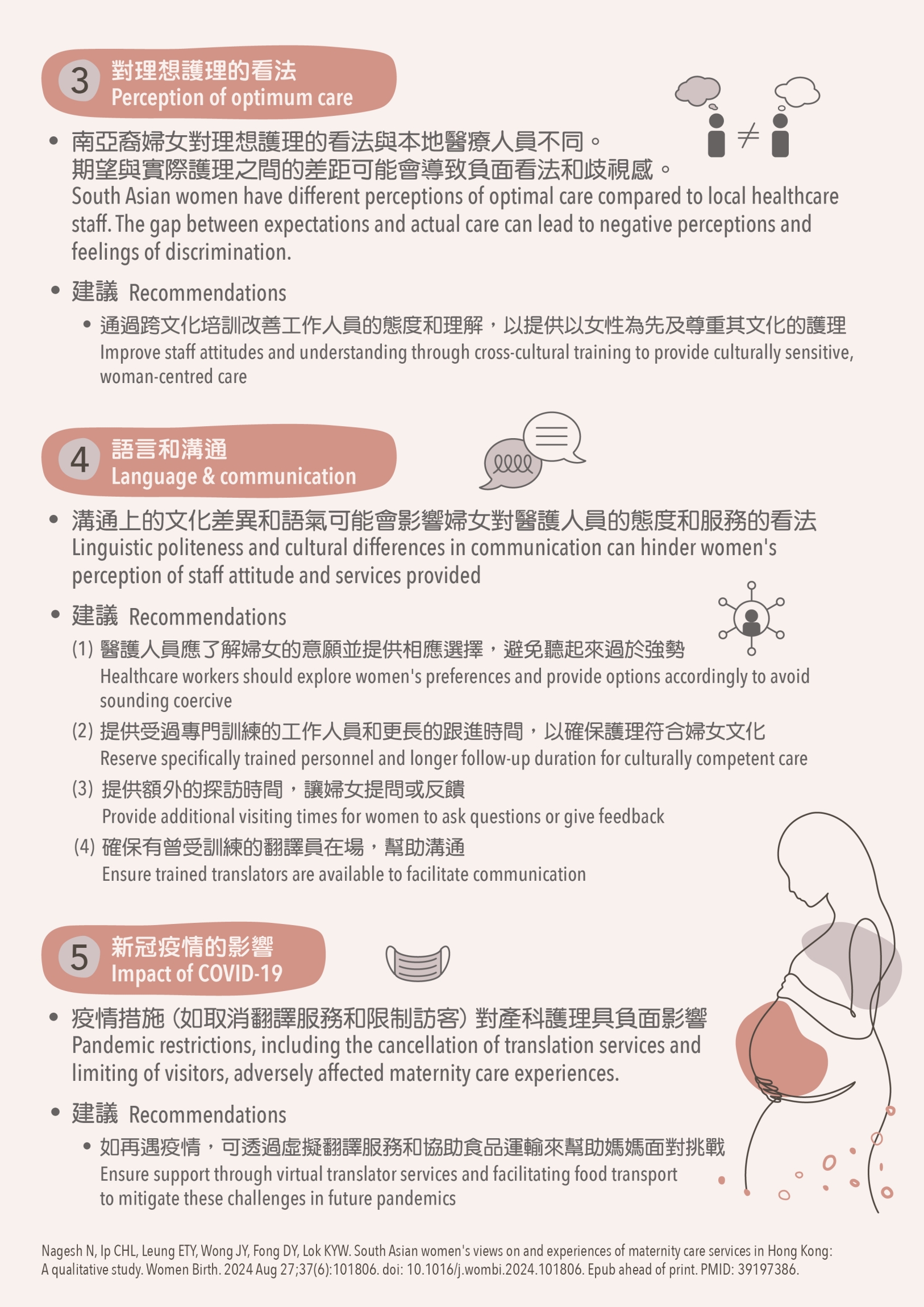
Background
- South Asian population in Hong Kong: Increased from 65K+ (2011) to 101K+ (2021)
- Previous studies showed that ethnic minority and migrant women face health disparities, which can lead to adverse maternal and neonatal outcomes.
Method
- One-on-one in-depth interviews
- Participants: 20 South Asian women who used maternity care services in the past 5 years
Key findings
1) Maternal care services: Hong Kong VS home country
- All participants preferred Hong Kong’s services over those in their country of origin.
- They predominantly chose public services due to cost-effectiveness and reported overall satisfaction
2) Navigating Hong Kong’s maternal care system
- Public-private partnerships in Hong Kong presents a challenge for maintaining continuity of healthcare.
- Recommendations
-
- Ensure South Asian women are followed up by the same healthcare providers or translator, at least in the public sector
- Introduce the local healthcare system during antenatal visits or migration procedures
- Organize sharing sessions led by trained migrant women
3) Perception of optimum care
- South Asian women have different perceptions of optimal care compared to local healthcare staff. The gap between expectations and actual care can lead to negative perceptions and feelings of discrimination.
- Recommendations: Improve staff attitudes and understanding through cross-cultural training to provide culturally sensitive, woman-centred care.
4) Language & communication
- Linguistic politeness and cultural differences in communication can hinder women's perception of staff attitude and services provided.
- Recommendations:
-
- Healthcare workers should explore women's preferences and provide options accordingly to avoid sounding coercive
- Reserve specifically trained personnel and longer follow-up duration for culturally competent care
- Provide additional visiting times for women to ask questions or give feedback
- Ensure trained translators are available to facilitate communication
5) Impact of COVID-19
- Pandemic restrictions, including the cancellation of translation services and limiting of visitors, adversely affected maternity care experiences.
- Recommendations: Ensure support through virtual translator services and facilitating food transport to mitigate these challenges in future pandemics
Nagesh N, Ip CHL, Leung ETY, Wong JY, Fong DY, Lok KYW. South Asian women's views on and experiences of maternity care services in Hong Kong: A qualitative study. Women Birth. 2024 Aug 27;37(6):101806. doi: 10.1016/j.wombi.2024.101806. Epub ahead of print. PMID: 39197386.
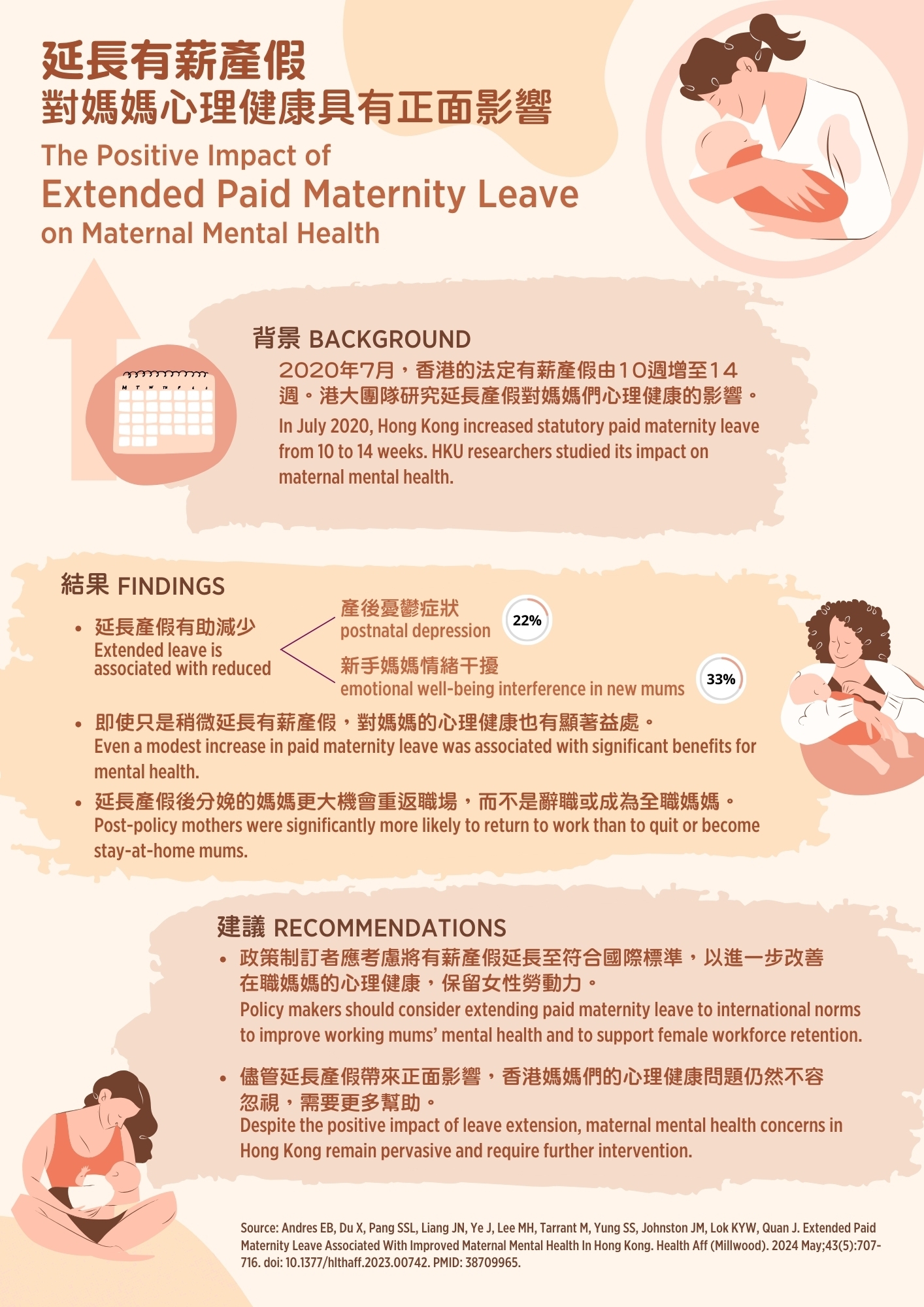
Background
In July 2020, Hong Kong increased statutory paid maternity leave from 10 to 14 weeks.
Findings
- Extended leave is associated with a 22% decrease in postnatal depression symptoms and a 33% decrease in emotional well-being interference in new mothers.
- Even a modest increase in paid maternity leave was associated with significant benefits for mental health.
- Post-policy mothers were significantly more likely to return to work than to quit or become stay-at-home mums.
Recommendations
- Policy makers should consider extending paid maternity leave to international norms to improve working mums’ mental health and to support female workforce retention.
- Despite the positive impact of leave extension, maternal mental health concerns in Hong Kong remain pervasive and require further intervention.
Andres EB, Du X, Pang SSL, Liang JN, Ye J, Lee MH, Tarrant M, Yung SS, Johnston JM, Lok KYW, Quan J. Extended Paid Maternity Leave Associated With Improved Maternal Mental Health In Hong Kong. Health Aff (Millwood). 2024 May;43(5):707-716. doi: 10.1377/hlthaff.2023.00742. PMID: 38709965.
Lok KYW, Choi MSL, Ko RWT, Chau PPH, Lam CCO, Chang YS, Bick D. Effectiveness of a home-based peer support programme for Chinese mothers with low breastfeeding self-efficacy to increase the exclusivity and duration of breastfeeding: study protocol of a randomised control trial. BMJ Open. 2024 Jul 23;14(7):e081897. doi: 10.1136/bmjopen-2023-081897. PMID: 39043588; PMCID: PMC11268066.
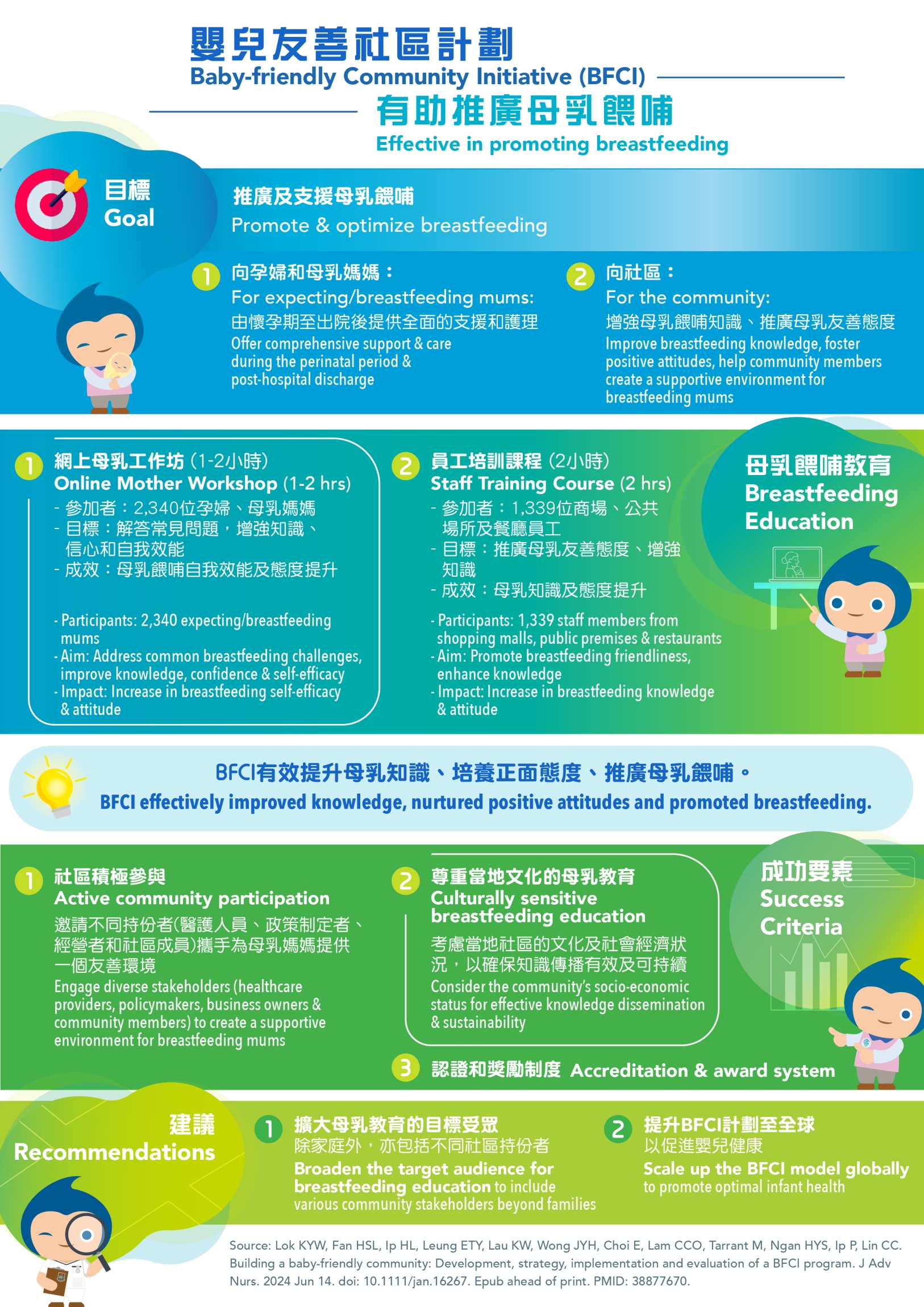
Lok KYW, Fan HSL, Ip HL, Leung ETY, Lau KW, Wong JYH, Choi E, Lam CCO, Tarrant M, Ngan HYS, Ip P, Lin CC. Building a baby-friendly community: Development, strategy, implementation and evaluation of a BFCI program. J Adv Nurs. 2024 Jun 14. doi: 10.1111/jan.16267. Epub ahead of print. PMID: 38877670.




